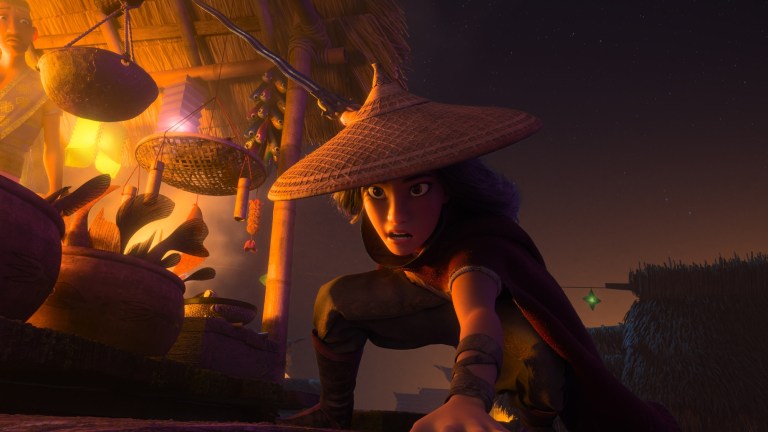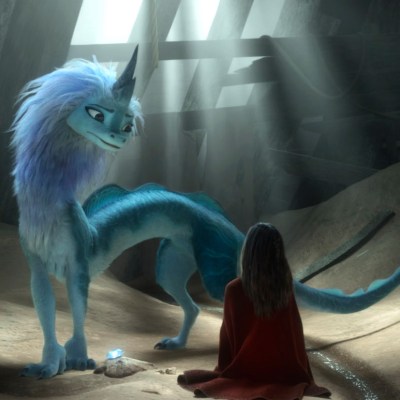Raya and the Last Dragon’s Many Cultural Influences Make for a Distinct World
Let's break down some of the many, distinct cultural influences that went into creating the world and characters for Raya and the Last Dragon.

Raya and the Last Dragon‘s creation of a Southeast Asian-inspired fictional world 500 years since the presumed death of the last dragon isn’t without its issues, but, generally, it represents a bold new step for Disney animation when it comes to setting and authentic cultural inspiration. Most Disney Princesses have hailed from Eurocentric stories and origins, but, with Southeast Asian Raya and Polynesian “Princess” Moana before her, Disney finally seems to be recognizing the wide world of real-life cultures from which they can (responsibly) draw. While this can be and is a slippery slope as Disney has a history of cultural appropriation and misappropriation, it is a generally positive trajectory and good news both for kids and adults who have never before seen characters who look like them in the “Disney Princess” world and for anyone who is hungry for new kinds of stories.
Where Does Raya and the Last Dragon Take Place?
Officially, Raya and the Last Dragon takes place in Kumandra—if the dragons didn’t give it away, the setting is a fictional fantasy world. Of course, like How To Train Your Dragon (which has both Scottish and Norwegian influences), that doesn’t mean Kumandra isn’t based on a real place—or, in this case places. The filmmakers drew from the cultures of Cambodia, Laos, Thailand, Vietnam, Singapore, Indonesia, the Philippines, Myanmar, and Malaysia in making the film. All of these countries are in a region of the world known as Southeast Asia, which has a population of over 670 million and makes up more than 8.5% of the global population. The United States has a notable Southeast Asian American population, many of whom emigrated to the U.S. in the 1970s as refugees escaping a war and humanitarian crisis that the United States played a major role in—the conflict we call the Vietnam War.
In bringing this region of the world into its storytelling, the creative forces behind Raya and the Last Dragon went for a pan-regional strategy, which means Kumandra is not based on a specific country in Southeast Asia but rather draws from many of the distinct cultures of the region to create a fictional world. Some people from the Southeast Asian and Southeast Asian American communities have understandable criticisms of this pan-Southeast Asian approach. Southeast Asia is a diverse region with many distinct cultures. While those cultures have and do influence one another, they are not the same and treating them as interchangeable in the creation of the fictional Kumandra perpetuates a reductive view of the region.
In responding to this critique of the pan-Southeast Asian depiction, Malyasian-born American scriptwriter Adele Lim (Crazy Rich Asians) told Polygon: “We have so many different people in this culture space. It’s very easy to view those differences as things that drive us apart. But when you look at everything that’s wonderful about our culture, and particularly our street food — which is the best in the world — it’s wonderful because of all these different elements. [Food] is also our language of love and our language of community.”
As you may notice from the screenwriter quotes above, Disney did make some vital efforts to ensure Southeast Asian American voices were in chief creative positions in making Raya. While neither of the film’s two directors have Southeast Asian heritage, both Lim and co-screenwriter Qui Nguyen, who is Vietnamese-American, are Southeast Asian American. Thai artist Fawn Veerasunthorn served as the Head of Story for the film; she was also part of the “Southeast Asia Story Trust” Disney put together, which gathered Southeast Asian choreographers, musicians, linguists, architects, cultural experts, martial artists and anthropologists to consult on the film. In preparation for the film, the Southeast Asia Story Trust went on a research tour across the region, which involved stops in Indonesia, Malaysia, Thailand, Cambodia, Vietnam, Laos, and Singapore.
What Race and Ethnicity is Raya?
Race is a social construct, but it’s also one America still uses to define and discuss the many different communities and identities that make up this country and world. As Raya is from a fictional land, the concept of race and ethnicity doesn’t totally translate one-for-one, but, generally, she is Southeast Asian. Raya is voiced by Kelly Marie Tran, who is Vietnamese-American.
“It means a lot to me,” Tran told Den of Geek about her role in the film. “I think back to moments in my childhood where I didn’t get to see myself represented in anything. And to believe that we are hopefully broadening the narrative when it comes to what people think of when they think of the word “princess,” or what they think of when they think of the word hero, or what they think of when they think of the word warrior. And hopefully, reinforcing the idea that it doesn’t matter what you look like or where you come from, you can be any of these things. I think young me would have been really proud of where I am today and what I’m trying to do. And that means a lot to me.”
Raya and the Last Dragon has come under some criticism for its lack of Southeast Asian representation in its voice cast, many of whom are of East Asian descent, including Awkwafina as Sisu, Daniel Dae Kim as Chief Benja, Gemma Chan as Namaari, Sandra Oh as Virana, and Benedict Wong as Tong. Alan Tudyk also stars as Tuk Tuk. There are so few roles for Southeast Asian American actors that many from the community and beyond were disappointed to see so many of the starring voice roles in Raya go to actors of Chinese and Korean descent.
The Cultural Inspiration Behind Dragon Sisu
Dragons have different cultural significance in different parts of the world. In the West, dragons are linked to conquest; they are something to be tamed and/or conquered. In East Asia, dragons are not a monster to be conquered but rather a powerful and benevolent force in creation mythology; they are often seen as symbols of good luck, power, and strength. In creating dragon character Sisu, the creators of Raya and the Last Dragon drew from dragon mythology specific to Southeast Asia, specifically the Nāga. In folklore, Nāga are divine or semi-divine beings who are half-human and half-serpent.
“The difference between an Eastern or Chinese dragon versus the Nāga is that a Chinese dragon is based on luck and power,” screenwriter Qui Nguyen told Polygon. “And the Nāga, because it’s water, it’s life and hope. It’s just that slight little difference. We didn’t want a dragon that came in to empower [human protagonist] Raya to hit people more; we wanted one that would inspire her to open up and trust.”
Raya and the Last Dragon is in theaters and available via Disney+ Premier on Friday, March 5th.
What did you think of the setting and world created for Raya and the Last Dragon? Let us know in the comments below.


